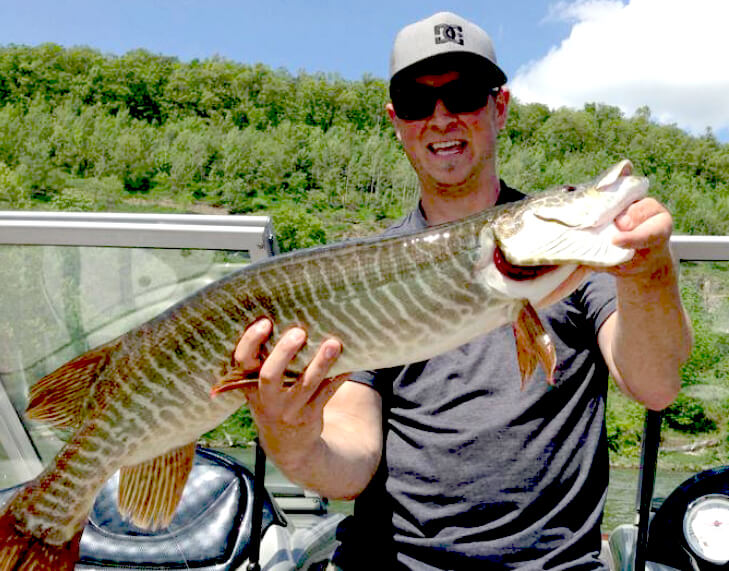
Tiger muskies, like this one caught in Tioga/Hammond Lake a few years ago, are proving elusive in the Beaver River.
Photo: Wikapedia
The Pennsylvania Fish and Boat Commission has stocked tiger muskies in the Beaver River in western Pennsylvania for years and years and years.
So how’s that worked out?
Well, no one seems to know. Not even the commission.
That’s a problem.
“We’re spending money to stock these fish. We really need to make sure that they’re producing a fishery. Not just a population, but a fishery,” said Tim Wilson, a biologist in the commission’s area 1 office in Linesville.
It’s trying to get answers.
The commission attempted to survey the river looking for tigers –typically stocked as fingerlings or larger — this spring. It didn’t find any.
The question now, is that because they aren’t there, or did other factors conspire to keep them hidden.
That’s a possibility on two fronts, it seems.
One is tied to access.
The Beaver River, Wilson said, is not always friendly to larger boats.
“We couldn’t get to the entire river,” he said. “The riffles stopped us from accessing some spots.”
The other issue is inexperience.
Biologists in northeastern Pennsylvania just last year pioneered a musky survey technique for rivers. Operating on the North Branch Susquehanna River, they enjoyed some success – more than previously — finding muskies.
Wilson said he and his crews, like biologists elsewhere around the state, are trying to replicate that technique. It remains a work in progress, however.
The commission isn’t giving up, though.
Biologists will survey the river again later this summer, then do so again next spring, too.
“We want to make sure that they’re not there, that we just didn’t miss them, before we make any changes to our stocking,” Wilson said. “So we’re going to give it a couple more chances.”
Anglers catch tiger muskies in the Beaver River, certainly. They do especially well around New Brighton Dam.
Those fish are as likely to be a result of stockings in the Ohio River as anything, though, Wilson said. Crews really want to find them further upstream, from the Eastvale Dam upriver to places like the mouth of Connequenessing Creek and Wampum.
What turns up there – or doesn’t – will determine what happens moving forward, Wilson said.
“We’re not going to say it’s a failure just yet,” he said.
Not tiger muskies, but pollution, in the Shenango River
Fish and Boat Commission biologists are surveying the Shenango River in western Pennsylvania this summer, too.
The goal is different, though.
Biologists will try to get fish population data if possible, said Tim Wilson of the area 1 office in Linesville. But the main goal will be to collect flesh samples.
The commission and state Department of Environmental protection are trying to determine the extent of PCBs in the river.
PCBs, or polychlorinated biphenyls, “belong to a broad family of man-made organic chemicals,” says the Environmental Protection Agency. First manufactured in 1929, they were banned 50 years later because of their toxicity.
The Shenango River contains enough of he pollutant that there’s a “do not eat” advisory on fish pulled from its waters.
Department of Environmental Protection standards call for a total “do not eat” advisory on fish at times. For that to occur, flesh samples must show 1.9 milligrams of PCB contamination per kilogram of meat. Smallmouth bass in the Shenango last year were found to have more than 10 times that amount.








